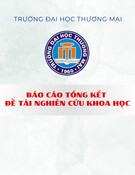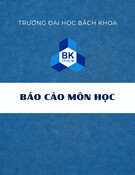
Original
article
Analysis
of
growth
and
light
interception
of
balsam
fir
and
white
birch
saplings
following
precommercial
thinning
D
Pothier
A
Margolis
Centre
de
Recherche
en
Biologie
Forestière,
Faculté
de
Foresterie
et
de
Géomatique,
Université
Laval,
Ste-Foy,
Québec,
Canada
G1K 7P4,
(418)
656-7120
(Received
14
May
1990;
accepted
15
January
1990)
Summary —
A
precommercial
thinning
was
conducted
on
young
balsam
fir
(Abies
balsamea
(L)
Mill)
and
white
birch
(Betula
papyrifera
Marsh)
trees.
Changes
in
light
environment
and
growth
re-
sponse
of
the
trees
were
followed
during
the
next
2
growing
seasons.
The
relative
growth
rate
(RGR)
of
thinned
balsam
firs
increased
during
both
the
first
and
the
second
growing
season.
This
in-
crease
in
growth
was
attributed
to
a
greater
net
assimilation
rate
(NAR)
which
was
associated
with
a
higher
level
of
light
availability.
Thinning
tended
to
positively
affect
the
RGR
of
white
birch
during
the
first
summer
following
treatment
but
not
during
the
second
growing
season.
Similar
fluctuations
were
noted
for
NAR
even
though
light
levels
remained
high
for
thinned
white
birch
trees
during
both
the
first
and
the
second
growing
season.
Balsam
fir
produced
more
sapwood
per
unit
of
additional
leaf
area
than
controls
during
the
first
summer
following
treatment
but
no
differences
were
observed
dur-
ing
the
second.
The
sapwood
area
growth
to
leaf
area
growth
ratios
of
thinned
and
control
white
birches
were
similar
during
both
the
first
and
the
second
summer
following
thinning.
Thus
the
sap-
wood
area-leaf
area
relationship
appears
to
be
more
stable
following
abrupt
changes
in
environ-
mental
conditions
for
the
indeterminate
growth
species,
white
birch,
than
for
the
determinate
growth
species,
balsam
fir.
growth
analysis
/ thinning
/
net
assimilation
rate
/
light
use
efficiency
/
sapwood
area-leaf
area
ratio
Résumé —
Analyse
de
la
croissance
et
de
l’interception
de
la
lumière
du
sapin
baumier
et
du
bouleau
à
papier
à
la
suite
d’une
éclaircie
précommerciale.
Une
éclaircie
précommerciale
a
été
réalisée
autour
de
jeunes
tiges
de
sapin
baumier
(Abies
balsamea
(L)
Mill)
et
de
bouleau
à
papier
(Betula
papyrifera
Marsh)
et
leur
croissance
de
même
que
les
changements
de
conditions
lumi-
neuses
ont
été
étudiés
pendant
les
deux
saisons
de
croissance
suivant
le
traitement.
Le
taux
de
croissance
(RGR)
des
sapins
baumiers
éclaircis
a
augmenté
pendant
les
2
saisons
de
croissance
suivant
le
traitement.
Cette
hausse
de
croissance
a
résulté
d’une
augmentation
du
taux
d’assimila-
tion
net
(NAR)
qui
a
été
associée
à
une
plus
grande
disponibilité
de
la
lumière.
L’éclaircie
a
eu
ten-
dance
à
affecter
positivement
le
RGR
des
bouleaux
à
papier
pendant
la
première
année
suivant
le
traitement
mais
l’effet
contraire
a
été
observé
pendant
la
deuxième
année.
Cette
même
tendance
a
aussi
été
observée
pour
le
NAR
quoique
le
niveau
de
lumière
soit
resté
plus
élevé
pour
les
bouleaux
*
Correspondence
and
reprints

à
papier
éclaircis
pendant
la
deuxième
année
suivant
le
traitement.
Les
sapins
baumiers
éclaircis
ont
produit plus
d’aubier par
unité
de
croissance
en
superficie
foliaire
que
les
témoins
pendant
le
premier
été
suivant
le
traitement,
mais
aucune
différence
n’a
été
observée
pendant
le
second
été.
La
relation
entre
la
croissance
en
superficie
d’aubier
et
la
croissance
en
superficie
foliaire
des
bouleaux
à
papier
dégagés
a
été
semblable
à
celle
des
témoins
pendant
les
2
saisons
de
croissance
suivant
le
traite-
ment.
Il
semble
donc
que,
à
la
suite
d’un
changement
des
conditions
environnementales,
la
relation
entre
la
superficie
d’aubier
et
la
superficie
foliaire
des
arbres
soit plus
stable
dans
le
cas
de
l’espèce
à
croissance
indéterminée,
le
bouleau
à
papier,
que
pour
l’espèce
à
croissance
déterminée,
le
sapin
baumier.
analyse
de
croissance
/
éclaircie
/
taux
d’assimllation
net
/
efficacité
d’utilisation
de
la
lumière
/
relation
superf
icie
d’aubier-superficie
foliaire
INTRODUCTION
Intra-
and
inter-specific
competition
in
dense
stands
can
limit
the
availability
of
environmental
resources
such
as
light,
wa-
ter,
and
mineral
nutrients.
Reducing
com-
petition
through
thinning
is
a
common
silvi-
cultural
practice
which
increases
the
supply
of
these
environmental
resources
to
selected
crop
trees.
The
increased
light
intensity
is
often
associated
with
a
higher
transpiration
rate
on
a
unit leaf
area
basis
(Black
et al,
1980;
Whitehead
et al,
1984).
Following
thinning,
this
increased
water
loss
per
unit
leaf
area
is
normally
compen-
sated
for
by
lower
transpiration
and
rainfall
interception
rates
per
unit
of
ground
area,
often
resulting
in
higher
soil
water
content
(Whitehead
et
al,
1984;
Aussenac
and
Granier,
1988).
Nevertheless,
if
little
or
no
osmotic
adjustment
occurs,
leaves
of
thinned
trees
can
reach
zero
turgor,
a
symptom
associated
with
thinning
shock
(Pothier
and
Margolis,
1990).
Thinning
can
also
increase
the
availability
of
mineral
nu-
trients
by
reducing
root
competition
if
sprouting
does
not
occur.
Moreover,
addi-
tional
nutrients
can
be
released
by
faster
litter
decomposition
caused
by
the
in-
crease
in
temperature
(Piene,
1978).
Light
availability
is
usually
the
most
im-
portant
factor
affecting
tree
growth
follow-
ing
removal
of
competing
vegetation
(Brand,
1986).
This
higher
light
intensity
can
modify
leaf
morphology
by
increasing
the
thickness
of
leaf
mesophyll
and
the
amount
of
chlorophyll
per
unit leaf
area
which
can
lead
to
increased
photosynthetic
rates
(Nygren
and
Kellomäki,
1983;
Oren
et
al,
1986).
Higher
photosynthetic
rates
per
unit
leaf
area
were
thought
to
be
re-
sponsible
for
the
increased
stemwood
growth
observed
soon
after
thinning
of
Douglas
fir
(Brix,
1983).
The
contribution
of
net
assimilation
rate
to
the
growth
re-
sponse
began
to
decline
2
yr
after
treat-
ment,
and
was
gradually
replaced
during
subsequent
years
by
the
effect
of
in-
creased
foliage
biomass
(Brix,
1983).
The
growth
response
of
a
tree
following
thinning
is
determined
primarily
by
its
pho-
tosynthetic
capacity
(Brix,
1983).
Conse-
quently,
this
study
aims
to
examine
the
re-
sponse
of
thinned
trees
in
terms
of
foliage
quantity,
foliage
efficiency
and
the
relation-
ship
between
sapwood
area
and
leaf
area.
Since
photosynthetic
photon
flux
density
(PPFD)
was
expected
to
be
the
major
envi-
ronmental
component
affecting
tree
growth,
it
was
measured
around
sample
trees
and
then
integrated
into
the
growth
analysis.
Two
common
competitors
in
the
forests
of
eastern
Canada,
balsam
fir
(Abies
balsamea
(L)
Mill),
and
white
birch
(Betula
papyrifera
Marsh)
were
selected
for
this
study.

MATERIALS
AND
METHODS
Study
area
The
study
took
place
at
Forêt
Montmorency
(47.3°N
71.2°W)
located ≈
80
km
north
of
Québec
City,
Québec,
Canada.
Mean
annual
precipitation
is
≈
1 430
mm,
≈ 66%
(950
mm)
in
the
form
of
rain.
The
mean
annual
temperature
is
0.3
°C
with
monthly
averages
ranging
from
-15.8
to
14.8
°C
for
January
and
July,
respec-
tively.
The
growing
season
typically
extends
from
the
beginning
of
June
to
the
end
of
August.
A
mixed
balsam
fir-white
birch
stand
was
se-
lected
for
study.
The
stand,
established
from
natural
regeneration
following
a
1975
clearcut,
was
located
on an
east-facing
exposure
with
a
12%
slope.
The
soil
was
a
well-drained
humic
orthic
podzol
derived
from
till.
The
stand
con-
tained
≈ 30 000
stems/ha
in
1987,
≈ 70%
of
which
were
white
birch.
At
the
beginning
of
the
experiment,
the
average
diameter
at
breast
height
and
total
height
of
balsam
fir
were
1.4
cm
and
2.2
m,
respectively,
while the
values
for
white
birch
were
1.6
cm
and
3.3
m,
respectively.
During
the
autumn
of
1987,
5
blocks
were
randomly
established
in
the
stand.
Within
each
block,
6
balsam
fir
and
6
white
birch
trees
were
randomly
selected.
For
3
trees
of
each
species,
all
trees
within
a
distance
of
1.5
m
from
a
select-
ed
tree
were
cut
down.
The
other
3
trees
of
each
species
were
left
as
controls.
Biomass
measurements
At
the
end
of
August
in
1988
and
1989,
1 tree
of
each
species-treatment
combination
was
cut
per
block.
The
20
trees
(2
species
x
2
treatments
x
5
blocks)
were
divided
by
height
into
3
crown
sections,
placed
in
separate
plastic
bags,
and
stored
in
a
refrigerator.
For
each
crown
section,
all
current
year
shoots
and
leaves
were
removed
and
their
fresh
weights
were
determined.
Subsamples
of
≈ 30
balsam
fir
needles
and
5
white
birch
leaves
were
then
collected,
and
leaf
areas
were
meas-
ured
with
a
leaf
area
meter
(Model
Li-3000,
Li-
Cor
Ltd,
Lincoln,
NE,
USA).
These
subsamples,
and
all
remaining
leaves,
were
dried
at
70 °C
for
at
least
48
h.
Shoot
subsamples
were
also
dried
for
the
determination
of
fresh
weight-dry
weight
conversion
factors.
The
same
procedure
was
used
for
balsam
fir
shoots
and
needles
of
the
previous
growing
season.
Leaves,
shoots
and
stems
from
the
rest
of
the
crown
section
were
weighed
separately
and
another
set
of
subsam-
ples
was
taken
for
determination
of
fresh
weight-dry
weight
conversion
factors.
Further-
more,
the
basal
area
growth
for
1988
and
1989
was
calculated
for
each
of
the
3
crown
sections
and
its
percentage
in
relation
to
the
total
basal
area
was
calculated.
This
factor
was
applied
to
the
total
biomass
of
the
stem
and
branches
of
each
crown
section
in
order
to
estimate
stem
and
branch
growth
for
each
of
the
2
years.
Light
measurements
On
5
cloudless
days
during
each
growing
sea-
son,
the
percentage
of
photosynthetic
photon
flux
density
(PPFD)
reaching
each
sample
tree
was
estimated
using
a
Li-Cor
quantum
sensor
(Li-190SB,
Li-Cor
Ltd,
Lincoin,
NE,
USA).
The
quantum
sensor,
which
was
connected
to
an
in-
tegrating
millivoltmeter,
was
uniformly
scanned
up
and
down
and
from
side
to
side
of
the
sun-
facing
side
of
each
sample
tree
for
≈ 20
s.
Just
prior
to
each
of
these
measurements,
another
integrated
measure
of
PPFD
was
taken
in
an
opening
under
full
sun.
By
dividing
these
2
val-
ues,
we
were
able
to
assess
the
percentage
of
PPFD
reaching
our
study
trees.
Photosynthetic
photon
flux
density
measurements
were
taken
at
randomly
selected
times
between
9:00
and
15:00
for
each
tree.
Thus,
these
PPFD
meas-
urements
represent
average
values
from
the
main
part
of
the
day
and do
not
include
any
measurements
taken
when
the
sun
was
near
the
horizon.
The
total
incident
PPFD
for
each
growing
season
(June
1-August
31)
was
estimated
from
a
Bellani
pyranometer
located
in
an
opening
near
the
experimental
site.
The
daily
readings
of
the
Bellani
pyranometer
were
corrected
for
changes
in
temperature
and
then
transformed
into
net
short-wave
radiation
(150-4
000
nm)
us-
ing
the
equation
of
Bernier
and
Plamondon
(1983).
Total
PPFD
was
calculated
assuming
that
50%
of
the
net
short-wave
radiation
lay
within
the
waveband
400-700
nm
(Hunt
et
al,
1984).

The
product
of
incident
PPFD
for
each
grow-
ing
season
and
the
percentage
of
PPFD
availa-
ble
to
the
trees
was
taken
as
an
estimate
of
light
availability
(I
o)
for
each
sample
tree.
More-
over,
the
amount
of
PPFD
intercepted
by
trees
(J)
was
estimated
by
the
product
of
Io
times
the
projected
leaf
area
of
each
tree
(Hunt
et
al,
1984).
Growth
analysis
Growth
analysis
was
performed
using
the
rela-
tive
growth
rate
(RGR)
and
its
classical
subdivi-
sion
into
specific
leaf
area
(SLA),
leaf
weight
ra-
tio
(LWR),
and
net
assimilation
rate
(NAR):
where
W
is
the
total
dry
mass
of
stemwood
and
branches
(g),
LA
is
the
projected
leaf
area
of
the
tree
(m
2
),
LW
is
the
leaf
weight
of
the
tree
(g),
and
∂W/∂t
is
the
instantaneous
rate
of
change
in
plant
dry
mass.
The
calculations
of
RGR,
SLA,
LWR,
and
NAR
were
made
accord-
ing
to
Margolis
and
Brand
(1990).
These
calculations
used
estimates
of
LA
of
the
previous
growing
season
because
direct
measurements
would
have
required
defoliating
the
trees
at
the
beginning
of
the
experiment.
For
balsam
fir,
projected
leaf
area
of
the
previous
year
was
assessed
by
subtracting
the
current
year
leaf
area
production
from
the
total
leaf
area
adjusted
to
account
for
the
12.5%
turnover
of
balsam
fir
foliage
per
year
(Bakusis
and
Han-
sen,
1965).
The
same
procedure
was
applied
for
the
determination
of
the
previous
year
leaf
weight.
For
white
birch,
the
previous
year
leaf
area
was
estimated
from
the
sapwood
area
to
leaf
area
ratios
determined
for
the
current
year
leaf
area
and
subtracting
the
current
year
sap-
wood
growth.
Previous
growing
season
leaf
weight
for
white
birch
was
computed
as
the
product
of
the
previous
year
leaf
area
and
the
specific
leaf
weight
(g/m
2)
of
the
control
white
birches
only.
Net
assimilation
rate
(NAR)
was
further
sub-
divided
into
light
availability
and
light
use
effi-
ciency
(Margolis
and
Brand,
1990):
where
J
is
the
amount
of
PPFD
energy
inter-
cepted
by
a
plant
per
unit
time
(MJ
yr-1).
Thus,
Io
corresponds
to
the
light
availability,
ie
the
amount
of
incident
light
per
unit
area
per
unit
time
(MJ
m
-2
yr-1),
and
LUE is
the
light
use
effi-
ciency
ie
the
amount
of
wood
(g
dry weight)
pro-
duced
per
unit
of
intercepted
light
(g
MJ-1).
Since
RGR,
NAR
and
LUE
are
average
values
over
periods
of
1
yr,
the
product
of
SLA
x
LWR
x
NAR
(Eq
1)
and
Io
x
LUE
(Eq
2)
only
approxi-
mate
RGR
and
NAR,
respectively.
These
prod-
ucts
will
equal
RGR
and
NAR
only
if
the
values
are
calculated
instantaneously
(Radford,
1967).
Since
the
values
shown
in
tables
I
and
II
are
yearly
averages,
multiplying
these
average
val-
ues
together
does
not
necessarily
give
the
same
result
that
one
would
expect
from
the
equations.
In
fact,
fairly
large
discrepancies
did
occur.
Statistical
analysis
Data
were
subjected
to
analyses
of
variance
for
a
split-plot
design
where
species
was
the
main
plot,
and
the
thinning
treatment
was
the
split
plot.
Least
significant
differences
at
the
95%
lev-
el
were
computed
using
the
Waller-Duncan
mul-
tiple
comparison
test.
Logarithmic
data
transfor-
mation
was
applied
when
the
variances
of
groups
were
found
to
be
proportional
to
their
means.
RESULTS
Precommercial
thinning
increased
RGR
of
balsam
fir
by
43%
the
first
growing
season
following
treatment
and
65%
the
second
growing
season
(table
I).
Thinning
did
not
significantly
affect
LWR
of
balsam
fir
but
rather
resulted
in
a
decreased
SLA.
Net
assimilation
rate
(NAR)
was
increased
78%
and
92%
by
the
treatment
during
the
first
and
the
second
growing
seasons
fol-
lowing
thinning,
respectively
(table
I).
Thus,
for
a
given
amount
of
leaf
area,
thinned
balsam
fir
produced
more
wood

than
controls.
The
increase
in
NAR
was
associated
with
higher
light
availability
Io
(table
I),
whereas
light
use
efficiency
(LUE)
was
inversely
related
to
Io
(fig
1).
The
overall
effect
of
the
thinning
on
the
growth
rate
of
white
birch
was
less
clear
(table
II).
Whereas
the
NAR
increased
sig-
nificantly
the
first
season,
the
compensat-
ing
decrease
in
SLA
resulted
in
no
signifi-
cant
differences
between
RGRs.
During
the
second
growing
season,
however,
the
LWR
of
the
thinned
birches
increased
sig-
nificantly
but
NAR
was
no
longer
statisti-
cally
significant
and
thinned
trees
even
showed
a
tendency
toward
a
lower
NAR
than
the
controls.
The
increase
in
the
LWR
was
compensated
for
by
a
decrease
in
the
SLA
and
thus
the
RGR
of
thinned
and
con-
trol
birches
showed
no
significant
differ-
ences
(table
II).






![Báo cáo seminar chuyên ngành Công nghệ hóa học và thực phẩm [Mới nhất]](https://cdn.tailieu.vn/images/document/thumbnail/2025/20250711/hienkelvinzoi@gmail.com/135x160/47051752458701.jpg)









